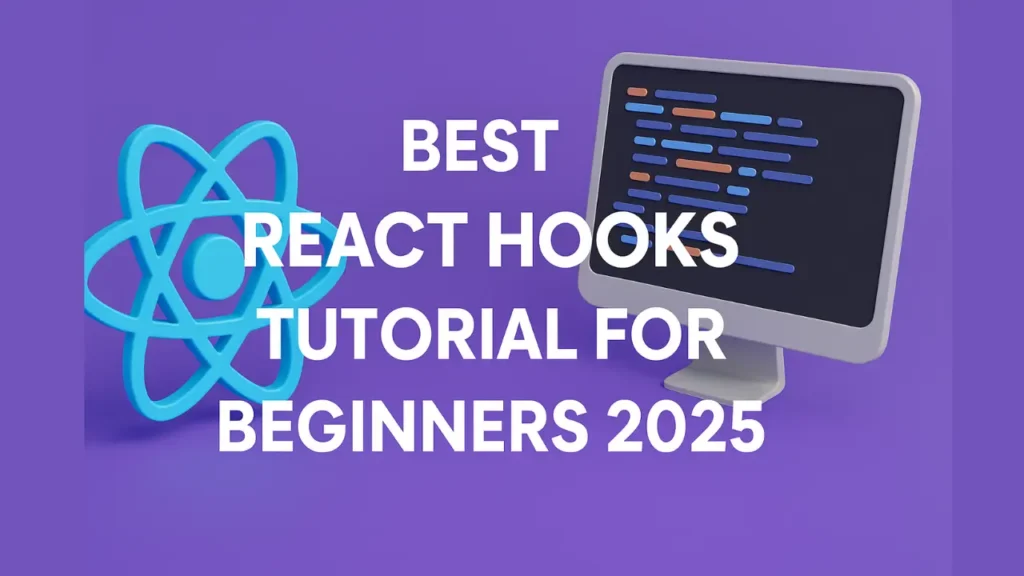React has completely changed the game in modern web development—and React Hooks are at the heart of this revolution. If you’re new to front-end programming, you’re probably wondering: What are React Hooks, and how do I learn them in 2025?
In this post, we’ll walk you through the best React Hooks tutorial for beginners in 2025, showing you what they are, how they work, and how you can start coding smarter (not harder) today.
Let’s get started.
What Are React Hooks?
React Hooks are functions that let you “hook into” React state and lifecycle features without writing class components. Introduced in React 16.8, Hooks are now the standard in building React apps.
Instead of this:
class MyComponent extends React.Component {
constructor(props) {
super(props);
this.state = { count: 0 };
}
}
You now write:
import { useState } from ‘react’;
function MyComponent() {
const [count, setCount] = useState(0);
}
Cleaner, shorter, and way easier for beginners to grasp.
Why Learn React Hooks in 2025?
Here’s why learning React Hooks today makes sense:
-
95% of new React jobs now use function-based components with hooks
-
Top companies like Meta, Netflix, and Airbnb build products using hooks
-
Tutorials, bootcamps, and job interviews have shifted to hooks as the default
According to Stack Overflow’s 2024 Developer Survey, React remains the #1 JavaScript framework—and Hooks are the backbone of most real-world projects.
Best React Hooks to Learn as a Beginner
Here’s what every React beginner should master:
1. useState – Handle Local Component State
This hook allows you to add state variables to functional components.
const [count, setCount] = useState(0);
2. useEffect – Side Effects & API Calls
Used for data fetching, setting up subscriptions, or manually changing the DOM.
useEffect(() => {
document.title = `You clicked ${count} times`;
}, [count]);
3. useRef – Accessing DOM Elements or Persistent Variables
Great for timers, focusing on input fields, or storing mutable values.
4. useContext – Global State Made Easy
This hook helps pass data through the component tree without manually drilling props.
Best React Hooks Tutorial for Beginners 2025 (Step-by-Step)
Here’s a simple roadmap to follow:
Step 1: Understand Functional Components
Before using hooks, get comfortable writing functional components instead of class-based ones.
Step 2: Learn useState and useEffect
These two hooks cover 90% of everyday needs.
Step 3: Build Mini Projects
Apply your knowledge by creating:
-
A counter app (useState)
-
A to-do list (useState + useEffect)
-
A weather app with API calls (useEffect + fetch)
Step 4: Explore Advanced Hooks
After basics, try useReducer, useMemo, or custom hooks.
Recommended Free Resources
Here are trusted places to learn hooks (updated for 2025):
-
React Official Docs – Beginner-friendly and well-organized
-
freeCodeCamp React Hooks Course – Hands-on projects
-
Kent C. Dodds Blog – One of the React community leaders
-
W3Schools – React Hooks – Simple examples
Want help implementing React in real-world projects?
👉 Explore Our Front-End Services
👉 Schedule a Free Consultation
At Wix Infotech, we help startups and small businesses build powerful React-based apps—with performance, SEO, and design in mind.
Tips to Master React Hooks Faster
-
Practice over theory – Build real apps, not just read
-
Use dev tools like React Developer Tools extension
-
Join communities – Reddit, Discord servers, or Stack Overflow
-
Don’t skip errors – Debugging is learning
Common Beginner Mistakes to Avoid
-
Using
useEffectwithout a dependency array -
Forgetting to cleanup in
useEffect -
Mutating state directly instead of using setter functions
-
Overusing
useRefinstead of proper state management
These are easily fixed with practice, and tutorials often cover these issues in depth.
Related Articles 👉 Master the Grid: How to Build a Responsive Website with CSS Grid (Even If You’re Not a Pro)
Master the Grid: How to Build a Responsive Website with CSS Grid (Even If You’re Not a Pro)
Conclusion
If you’re starting out in front-end development, learning hooks should be your top priority in 2025. They make React easier, cleaner, and more scalable. Whether you’re switching careers, upskilling, or just experimenting—mastering hooks will set you apart.
The best React Hooks tutorial for beginners in 2025 isn’t just one course—it’s a mix of practice, projects, and real-world applications.
📞 Need expert help to build your React project?
Reach out to the dev team at Wix Infotech and let’s bring your app idea to life.

